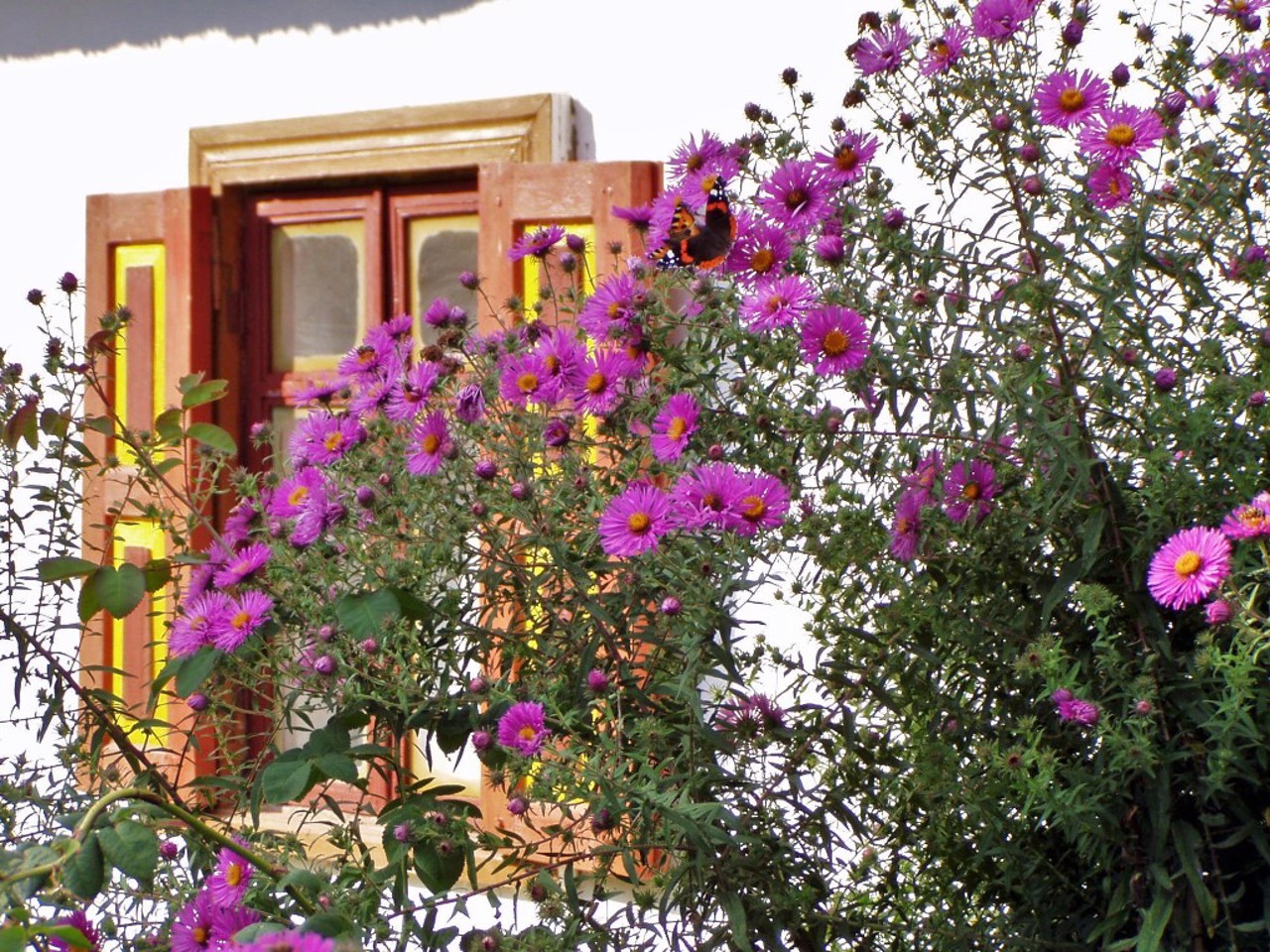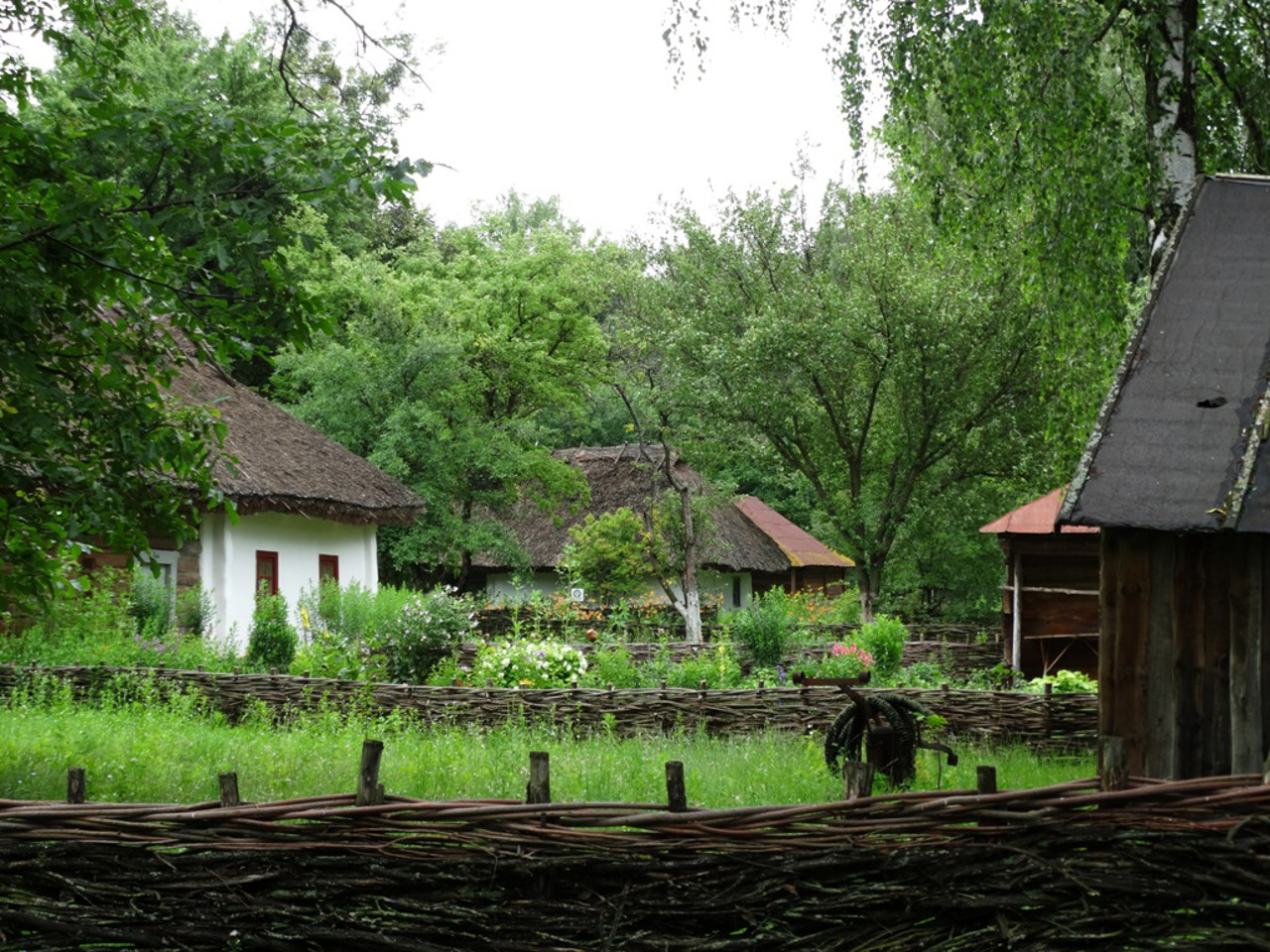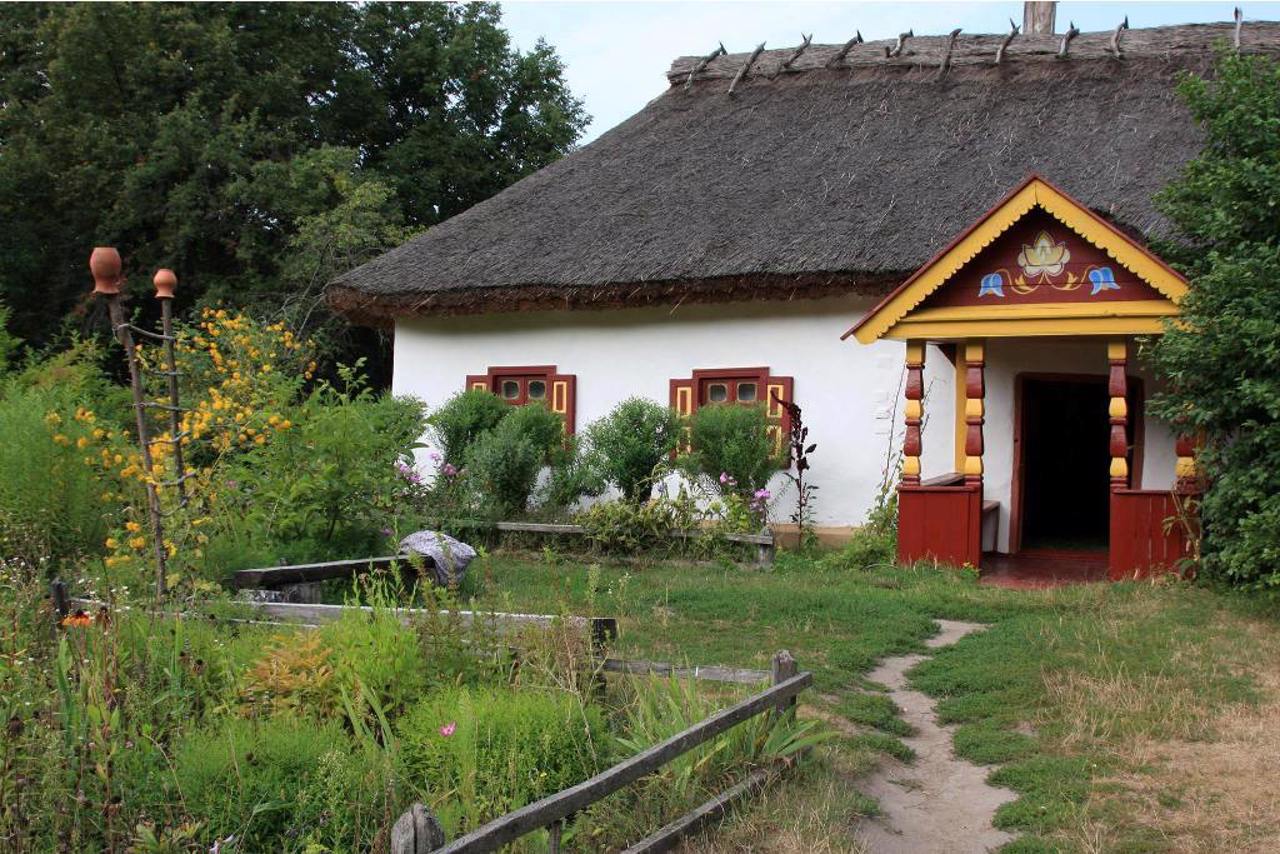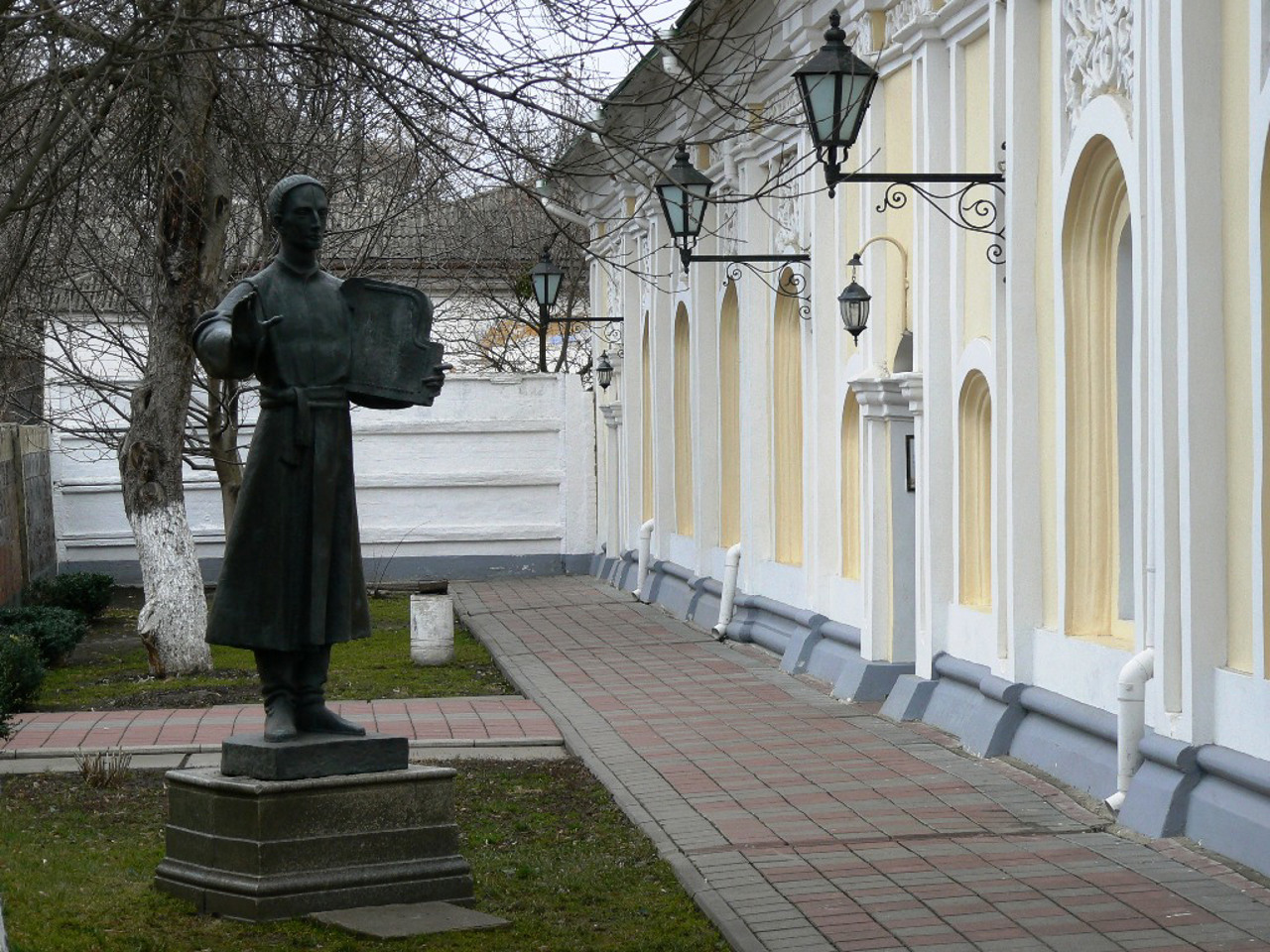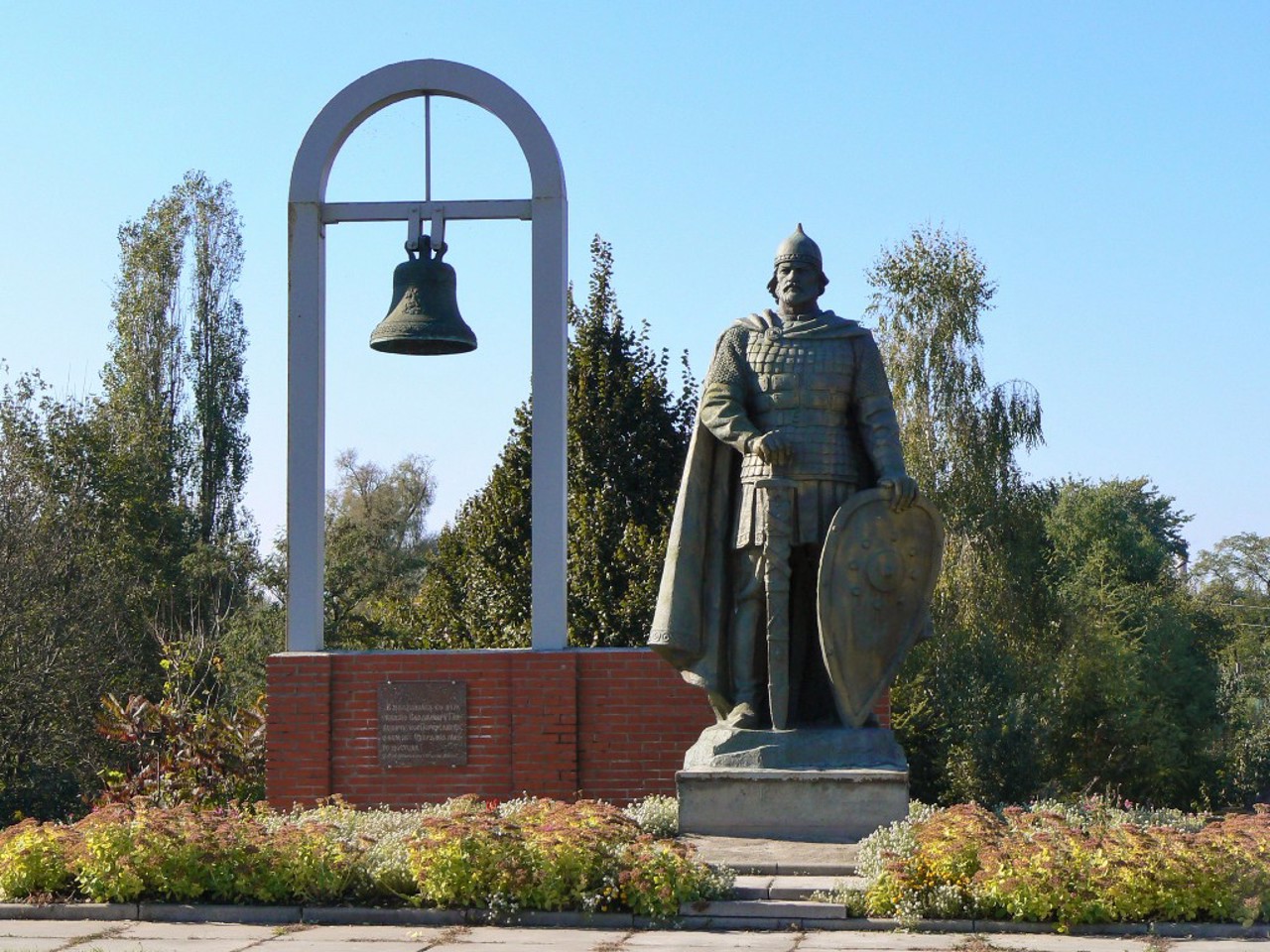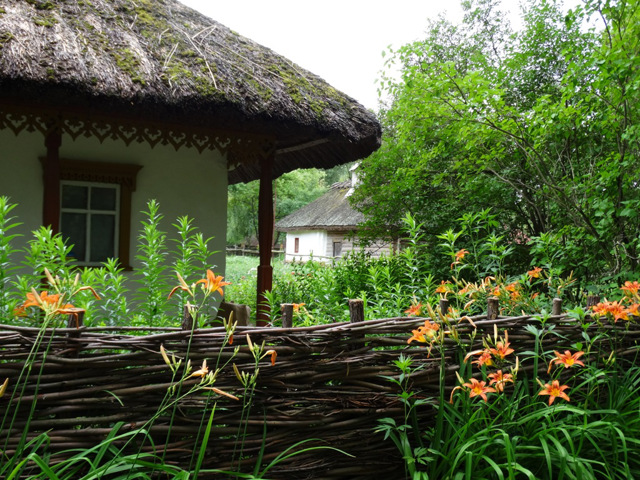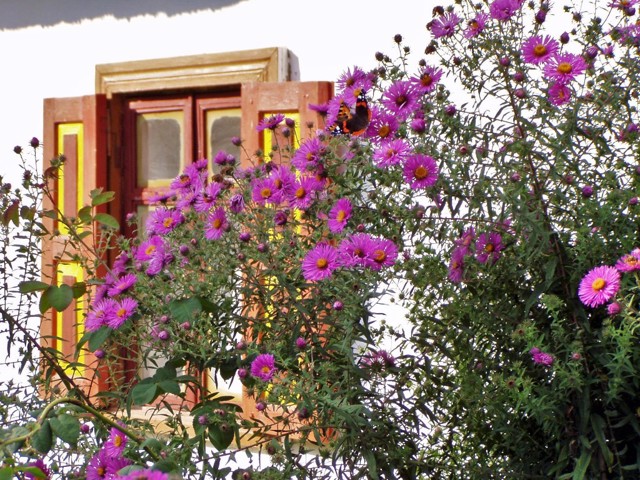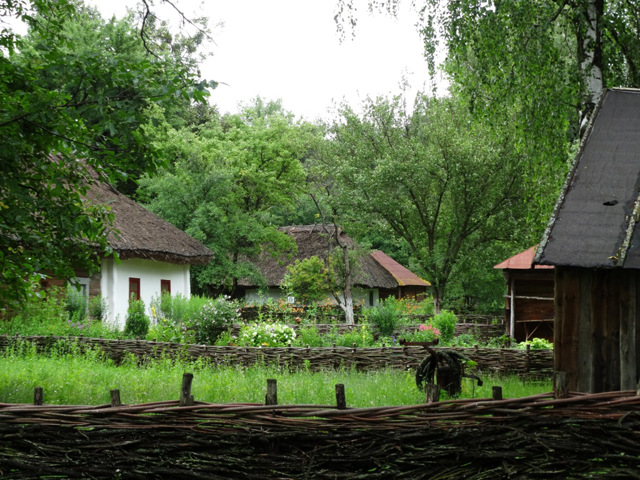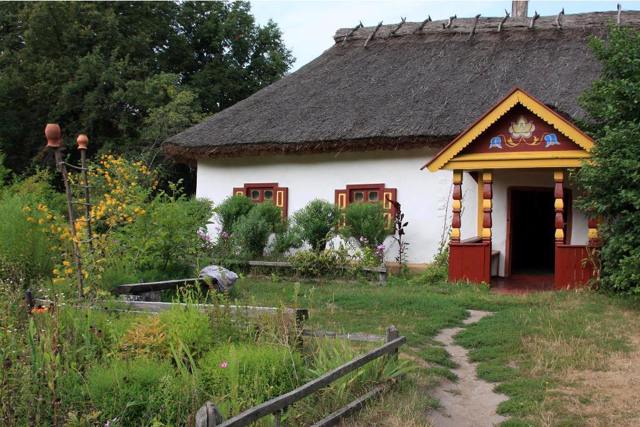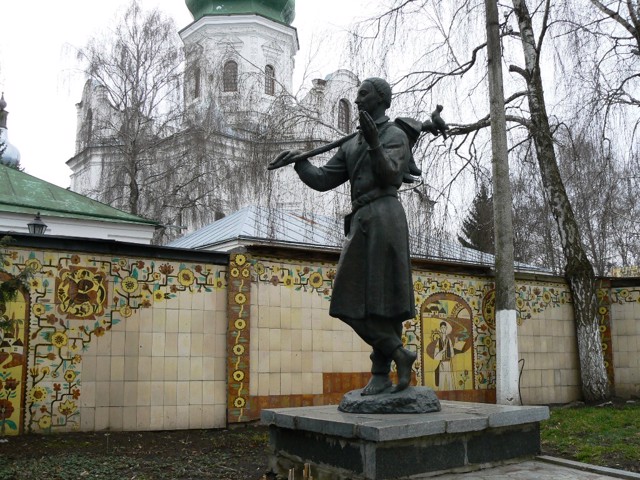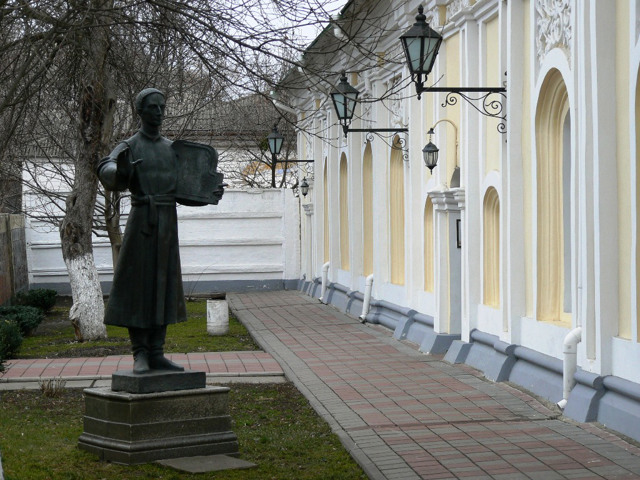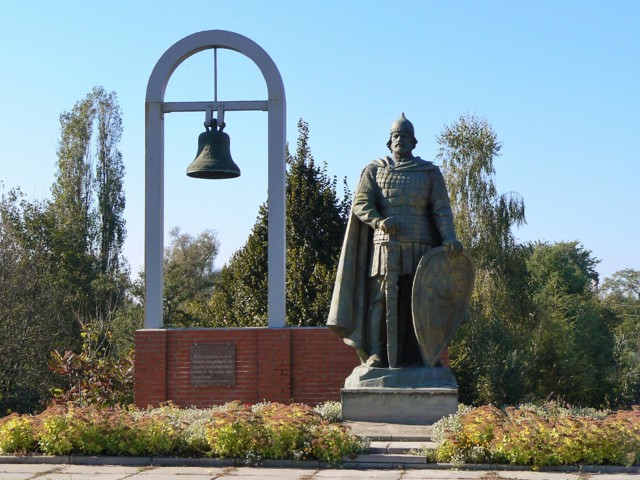Functional temporarily unavailable
General information about Pereyaslav
Pereyaslav is a cozy provincial town-museum on the river. Trubezh, on the left bank of the Dnieper. For the first time Pereyaslavl was mentioned in the treaty between Russia and Byzantium in 907 as one of the four largest cities of the Kiev state. An ancient legend attributes the foundation of the city to the Kiev prince Vladimir the Great, who defeated the Pechenezh army here in 992. According to The Tale of Bygone Years, the battle was preceded by a duel between a young Russian hero-kozhemyaki (a possible prototype of the fabulous Cyril Kozhemyaka) with the famous Pechenezh warrior, in which the young hero won, thereby "surpassing the glory" of the Pechenezh giant. In princely times Pereyaslavl was a fortress on the southern border of Ancient Rus, a trade center, as well as ...
Pereyaslav is a cozy provincial town-museum on the river. Trubezh, on the left bank of the Dnieper. For the first time Pereyaslavl was mentioned in the treaty between Russia and Byzantium in 907 as one of the four largest cities of the Kiev state. An ancient legend attributes the foundation of the city to the Kiev prince Vladimir the Great, who defeated the Pechenezh army here in 992. According to The Tale of Bygone Years, the battle was preceded by a duel between a young Russian hero-kozhemyaki (a possible prototype of the fabulous Cyril Kozhemyaka) with the famous Pechenezh warrior, in which the young hero won, thereby "surpassing the glory" of the Pechenezh giant. In princely times Pereyaslavl was a fortress on the southern border of Ancient Rus, a trade center, as well as the first spiritual capital of the country - the residence of the Kiev metropolitans (while Sophia of Kiev was being built). It was ruled by Vladimir Monomakh, Yuri Dolgoruky, Vladimir Glebovich and others. The city had two stone castles (princely and episcopal), 8 churches. After the Mongol-Tatar invasion of 1239, only the foundations of ancient Russian buildings were preserved. In 1654, the Pereyaslavl Rada took place in the revived city, which proclaimed the annexation of Ukraine to Muscovite Rus. Until 1782 Pereyaslav was a regimental town, a significant center of education. The philosopher G. Skovoroda, the poet T. Shevchenko, and other cultural figures lived and worked here. The National Historical and Ethnographic Reserve "Pereyaslav" unites 25 museums, incl. the famous skansen - Museum of Folk Architecture and Life of the Middle Dnieper Region.
Переяслав - затишне провінційне місто-музей на р. Трубіж, на лівому березі Дніпра. Вперше Переяславль згадується в договорі між Руссю та Візантією у 907 році як одне з чотирьох найбільших міст Київської держави. Давня легенда приписує заснування міста київському князю Володимиру Великому, який розбив тут в 992 р. печенізьке військо. Згідно "Повісті времінних літ", бою передував поєдинок якогось юного руського богатиря-кожум'яки (можливий прототип казкового Кирила Кожум'яки) з прославленим печенізьким воїном, в якому молодий герой переміг, чим "перейняв славу" печенізького велетня. У княжі часи Переяславль був фортецею на південному кордоні Київської Русі, торговим центром, а також першої духовною столицею країни - резиденцією київських митрополитів (поки буду ...
Переяслав - затишне провінційне місто-музей на р. Трубіж, на лівому березі Дніпра. Вперше Переяславль згадується в договорі між Руссю та Візантією у 907 році як одне з чотирьох найбільших міст Київської держави. Давня легенда приписує заснування міста київському князю Володимиру Великому, який розбив тут в 992 р. печенізьке військо. Згідно "Повісті времінних літ", бою передував поєдинок якогось юного руського богатиря-кожум'яки (можливий прототип казкового Кирила Кожум'яки) з прославленим печенізьким воїном, в якому молодий герой переміг, чим "перейняв славу" печенізького велетня. У княжі часи Переяславль був фортецею на південному кордоні Київської Русі, торговим центром, а також першої духовною столицею країни - резиденцією київських митрополитів (поки будувалася Софія Київська). Тут правили Володимир Мономах, Юрій Довгорукий, Володимир Глібович та ін. В місті було два кам'яних замки (княжий і єпископський), 8 храмів. Після монголо-татарської навали 1239 року збереглися тільки фундаменти давньоруських будівель. У 1654 р. у відродженому місті відбулася Переяславська рада, яка проголосила приєднання України до Московської Русі. До 1782 р. Переяслав був полковим містом, значним центром освіти. Тут жили і працювали філософ Г. Сковорода, поет Т. Шевченко, інші діячі культури. Національний історико-етнографічний заповідник "Переяслав" об'єднує 25 музеїв, в т.ч. відомий скансен - Музей народної архітектури та побуту Середньої Наддніпрянщини.
Сплануй своє перебування у Pereyaslav
What to see and where to go in Pereyaslav
Tourist attractions and museums of Pereyaslav
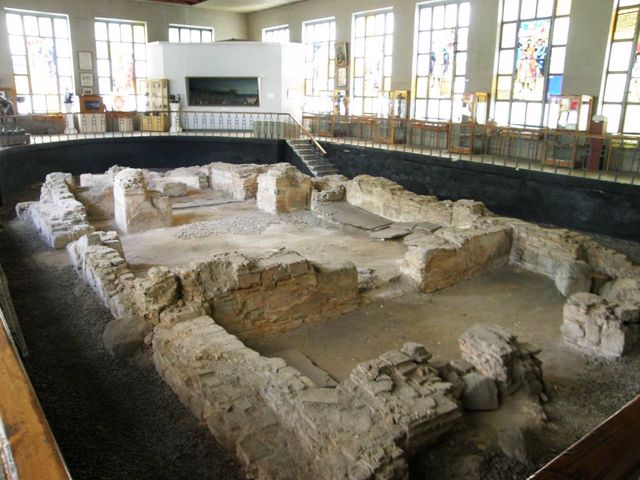
Archaeological Museum
Museum / gallery
The exposition pavilion of the Archaeological Museum of Pereyaslav was built in 1957 over the remains of the Savior Church of the XI century, which was located on the territory of the city suburb and served as the tomb of famous people of ancient Pereyaslav princely times. Thus, it was possible to preserve and present to visitors fragments of the foundations and walls of the ancient Rus'ian temple with the remains of a fresco, paved floor with ceramic tiles, burial in brick sarcophagi under slate slabs.
The exposition of the Archaeological Museum tells about the ancient history of the Pereyaslav region. In particular, you can see stone tools of primitive people, ceramic dishes of Trypillia culture, antique helmet made of gilded bronze, rare glassware of Chernyakhiv culture, products of Pereyaslav masters of the Princely era.
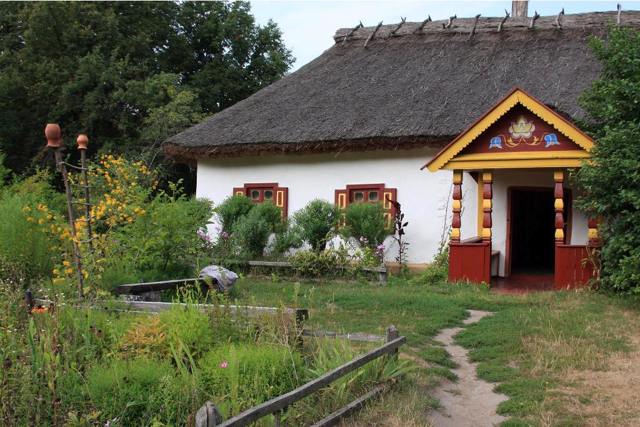
Folk Architecture Museum of the Middle Dnipro Region
Ethnographic complex , Museum / gallery
The Museum of Folk Architecture and Life of the Middle Dnieper Region is the first and one of the largest open-air museums in Ukraine. It was founded in 1964 on the initiative of historian and ethnographer Mykhailo Sikorsky. It is a part of the National Historical and Ethnographic Reserve "Pereyaslav".
The building of the museum imitates the planning of a classic Ukrainian village with a square in the middle. There are about 300 exhibits in the picturesque park area of 25 hectares on the outskirts of Pereyaslav. Almost half of them are authentic wooden temples, peasant houses and windmills of the XVII-XIX centuries, transported here from different parts of the region. 20 peasant yards with residential and farm buildings represent the life of representatives of various professions and segments of the population of Dnieper Ukraine - from the house of a poor peasant to the hunting lodge of Count Gorchakov. The interiors feature more than 20,000 exhibits: works of folk artists, tools, household items, archaeological materials, documents, photographs.
Among the most valuable architectural monuments: the Church of the Intercession of the Blessed Virgin (early XVII century) and the bell tower (mid-XVIII century) from the Right Bank Kyiv region; the Church of St. George (mid-18th century) from the Pereyaslav region, immortalized by Taras Shevchenko in the sepia "Andrusha"; forest border - a house of forest protection (late XIX century) from Kyiv Polissya; inn (early XIX century.) from the city of Pereyaslav.
There are 13 thematic museums in some monuments and exposition pavilions: Museum of the History of the Ukrainian Orthodox Church, Museum of Decorative and Applied Arts of Kyiv Region, Museum of Ukrainian Rites, Museum of Ukrainian Towel, Museum of the History of Forestry of the Middle Dnieper Region, Museum of the History of Beekeeping of the Middle Dnieper Region. Post Office Museum, Museum of the History of National Land Transport of the Middle Dnieper Region, Space Museum, Mykola Benardos Museum, Museum of the Classics of Jewish Literature Sholom Aleichem, Museum of Memory of Polissya District.
The archeological department exhibits reconstructions of dwellings of the Late Paleolithic, Chernyakhiv culture, Ancient Kyiv, Cossack era, as well as lapidary with stone stelae and burial structures of different epochs. The decoration of the museum is the natural landscape of the Tatar mountain, with skillfully inscribed in it artificial ponds, streets, courtyards, gardens, orchards and pastures, which give it vitality and special comfort.
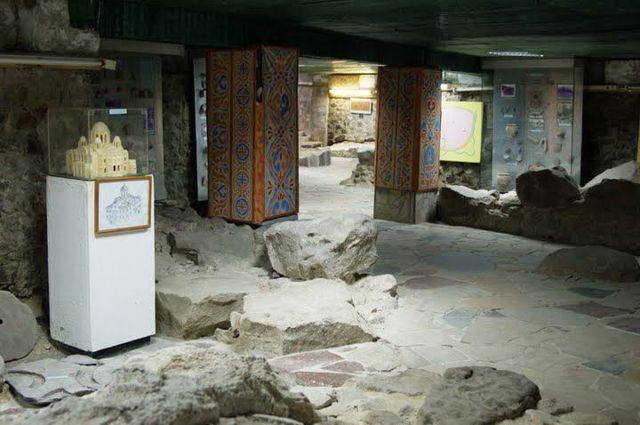
Museum of Architecture of Ancient Rus Pereyaslav (St. Michael's Church)
Temple , Architecture , Museum / gallery
The architectural ensemble of the St. Michael's Monastery is located on the territory of the Episcopal Court of the Pereyaslav Dytynets (Citadel). This fortification at the confluence of the Alta River and the Trubizh River was the historical core of medieval Pereyaslav in princely times. St. Michael's Cathedral of the XI century, built on the initiative of the Bishop of Pereyaslav, the Reverend Ephraim of Pechersk, under Prince Vladimir Monomakh was the largest church in the city. Many Pereyaslav princes were buried there (the tomb has not survived).
The cathedral was destroyed by the Mongol-Tatars during the storming of Pereyaslav in 1237. Now you can see the later St. Michael's Church, revived on ancient foundations by Pereyaslav Colonel Fedor Loboda in the middle of the XVII century. as a small wooden temple, and a century later rebuilt in stone in its present form. At the same time, a defensive bell tower with an entrance gate was erected. As a result of secularization in 1876, the church became a parish, received the status of a city council. Under Soviet rule, St. Michael's Church was closed and the dome torn down. Until recently, it housed the Museum of Folk Costume of the Dnieper region. The interior has preserved paintings of the XVIII-XIX centuries. Only in 2010 the monastery complex was returned to the Orthodox Church, in which the male monastery of Archangel Michael (UOC-MP) was reopened. Instead of the authentic dome recorded in Taras Shevchenko's painting, the religious community erected a dome-model of a 12th-century church above the church.
The monastery shares the territory with the Museum of Architecture of Ancient Pereyaslav, which was opened in 1982 on the initiative of the founder of the National Historical and Ethnographic Reserve "Pereyaslav" Mykhailo Sikorsky. The outline of the temple destroyed by the Mongols is lined with stone around the perimeter of the church, and the original masonry and mosaics are available for viewing in the covered pavilion in the courtyard of St. Michael's Monastery. There is also a model of the ancient n cathedral. The remains of other structures of the baby are hidden underground. There is a memorial sign in honor of the ancient Rus'ian chronicler Sylvester, one of the authors of the "Tale of Bygone Years", and several other sculptures.
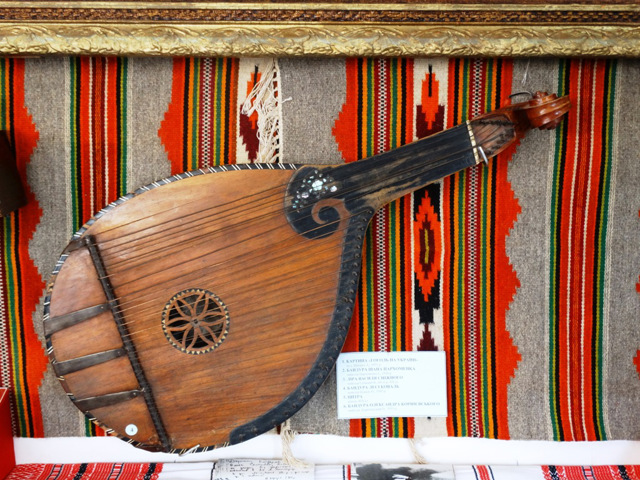
Museum of Kobzarstvo
Museum / gallery
The Museum of Kobzar Art in Pereyaslav is located in an old house, where in the early XX century there was a shop. About 250 exhibits tell about the history of the origin and development of kobzarstvo, about the life of the most famous Ukrainian bards, as well as about modern trends in kobzar art - traditional folk and folklore and stage-academic.
The oldest exhibits are authentic ancient Rus'ian musical instruments: whistles, tambourines and harps. A special place in the exposition is occupied by the traditional Ukrainian kobza - a lute-like string plucked musical instrument, which was an indispensable companion of the Zaporozhian Cossacks. In addition to the Cossack kobza, the museum exhibits lute, zither and bagpipes, as well as 26 banduras, which are more modern and sophisticated musical instruments. In particular, there are banduras that belonged to a prominent kobzar of the XIX century. Gnat Goncharenko and the famous master Alexander Kornievsky. The museum hosts concerts of Pereyaslav kobzars and other events.
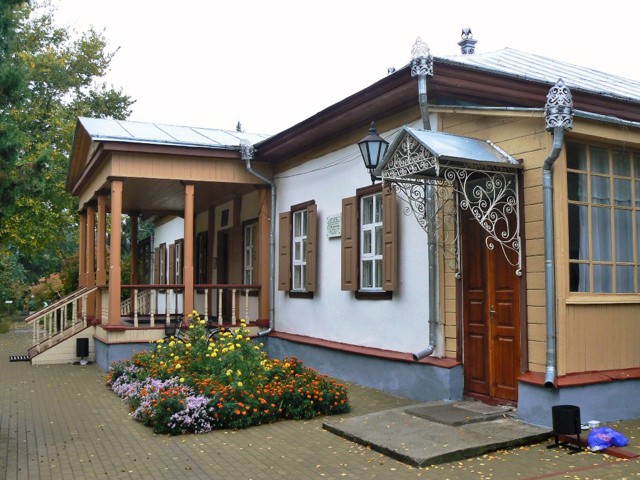
Museum of Taras Shevchenko's Testament
Museum / gallery
The Museum of "Testament" in Pereyaslav is dedicated to the most famous work of the outstanding Ukrainian poet-prophet Taras Shevchenko. The exposition is located in an old wooden house built in 1820, which belonged to the family of Pereyaslav doctor Andrei Kozachkovsky. It was there that Shevchenko visited him during his stay in Pereyalav, and it was here on December 25, 1845, during a serious illness, that he wrote his program poem, which became a call to the liberation struggle of the Ukrainian people and a message to his descendants.
The house reproduces the preliminary planning and interiors of the guest room where the poet lived, living rooms, libraries, Kozachkovsky's office. For a long time, a historical museum was located here. Much of his exposition is preserved and now reveals in chronological order the history of the Pereyaslav region of the Cossack period through the prism of its understanding by Shevchenko.
The most interesting exhibits belong to the Cossack era: ancient weapons, Cossack jewels, personal belongings of Cossack leaders, copies of important documents of the time. In particular, the personal sword of Hetman Bohdan Khmelnytsky, presented to him by the Polish King Jan Kazimir, is presented. You can also see the hetman's mace of the XVIII century, bunchuk of the XVII century, colonel's pirnach, squid of the hetman's clerk, etc.
Three literary and artistic halls tell about Taras Shevchenko's studies at the St. Petersburg Academy of Arts, the poet's early work, as well as his acquaintance with many Pereyaslav residents and personally with the owner of the house, about the "Pereyaslav Kobzar Autumn" - the period of a real creative rise of the artist.
In front of the estate grows an acacia tree planted by Shevchenko together with Kozachkovsky. There is a souvenir shop in front of the museum.
Reviews Pereyaslav
Geographical information about Pereyaslav
| {{itemKey}} | {{itemValue}} |
|---|---|
| Region |
Kyiv |

